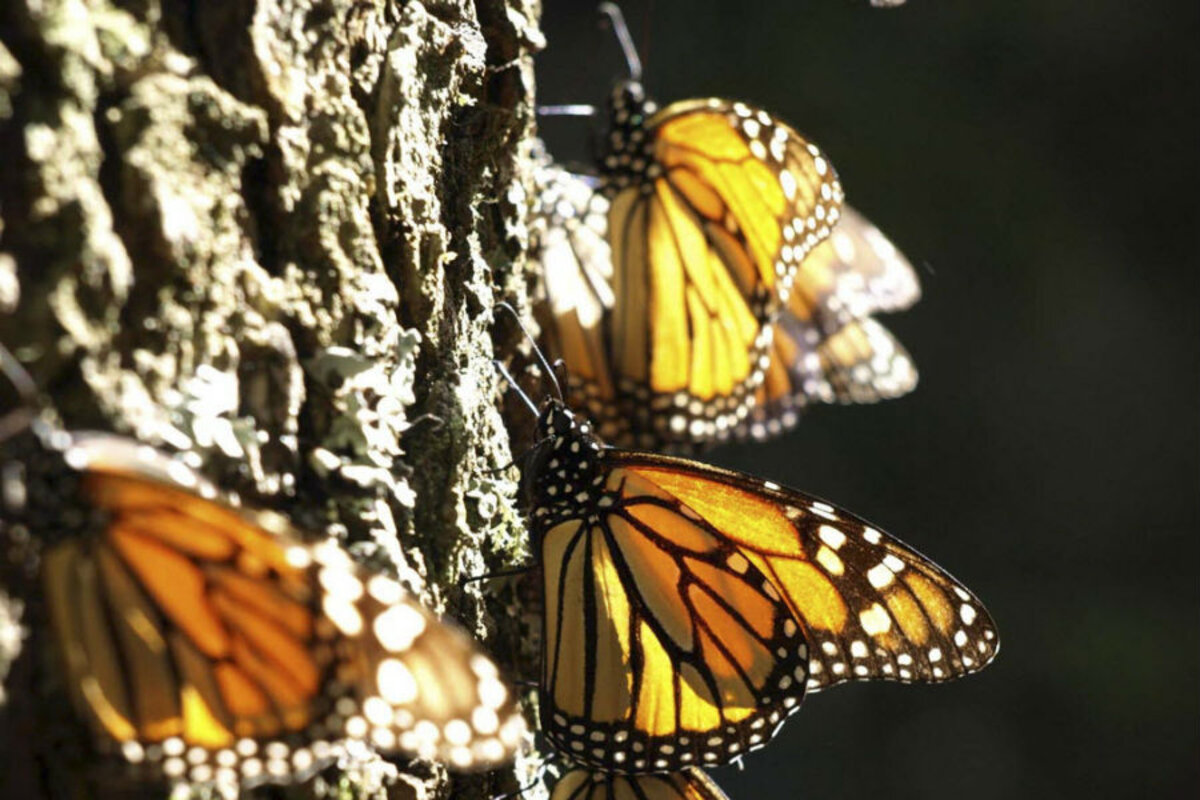How do monarch butterflies migrate so far? Hint, it's in their genes.
Loading...
| Washington
The 3,000-mile (4,800-km) mass migration of monarch butterflies in North America is one of the insect world's fantastic feats, with millions embarking on the arduous journey from as far north as Canada down into Mexico and the California coast each autumn.
Scientists who scoured the genome of these colorful insects offered new insight on Wednesday into this annual airborne adventure. They pinpointed a single gene related to flight muscle efficiency that plays a major role in the monarch butterfly's migration.
Their study, published in the journal Nature, also identified the gene behind the butterfly's striking orange-and-black coloration.
"I find it amazing that these little butterflies live for months and fly thousands of miles to perform this annual migration," said one the researchers, University of Chicago professor of ecology and evolution Marcus Kronforst.
Monarch butterflies are famous for migrating from the US and Canada to Mexico for the winter. Now a surprising study suggests the species itself also started out in North America some 2 million years ago.
"Our study shows that monarchs have been doing this every year for millions of years. There is nothing else like this on the planet," Kronforst added.
Kronforst said monarchs were widely thought to have evolved in South or Central America instead. But DNA from 80 monarchs sampled from the Americas and as far away as Europe and Australia points to a North American origin, maybe in the southern United States or northern Mexico.
Kronforst also said scientists had thought the monarch arose from a non-migrating ancestor. But the new study concludes the ancestor did migrate.
The number of migrating monarchs has plummeted in recent years. Kronforst said while an estimated one billion monarch butterflies migrated to Mexico in 1996, that number stood at about 35 million this past winter. Threats to them include habitat loss due to human activities, pesticides that kill milkweed and climate change, experts say.
While mainly a North American species, monarch populations also can be found in Central America, South America and elsewhere. Those outside North America do not migrate.
The researchers carried out genome sequences on 92 monarch butterflies from around the world including non-migratory ones as well as on nine butterflies from closely related species. To study the genetic basis for migration, they compared the genetic blueprint of migratory monarchs to those that do not migrate.
"One gene really stood out from everything else in the genome," Kronforst said.
It was a gene related to collagen, the main ingredient in connective tissue, that was essential for flight muscle function. The researchers were surprised to find the gene was less active, not more active, in migratory butterflies. So rather than making them big, powerful fliers the gene favored enhanced flight efficiency.
"An analogy might be the difference between marathon runners (migrating butterflies) and sprinters," Kronforst said.
Shuai Zhan, a biologist at the Shanghai Institutes for Biological Sciences, said the study determined that the species originated in North America, contradicting the hypothesis that monarchs evolved from tropical ancestors.
Adult monarch butterflies boast wings that are orange with black veins and white spots along the outside edges. Their wingspan is about 4 inches (10 cm) and their bodies are black.
Scientists say their orange color tells potential predators they taste awful and are toxic to eat thanks to chemicals from the milkweed plants that nourish them in their larval state.
Kronforst said monarch butterflies living east of the Rocky Mountains spend their winters inMexico to escape the cold weather while those west of the Rockies spend winters on theCalifornia coast before returning home in the spring.
This report includes additional material from The Associated Press.




